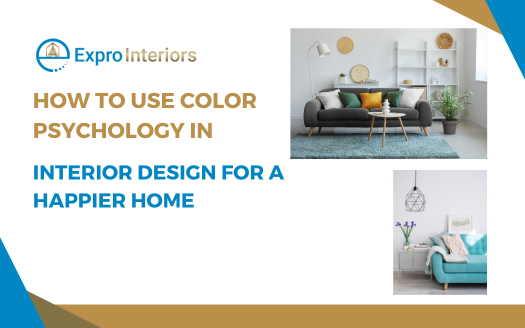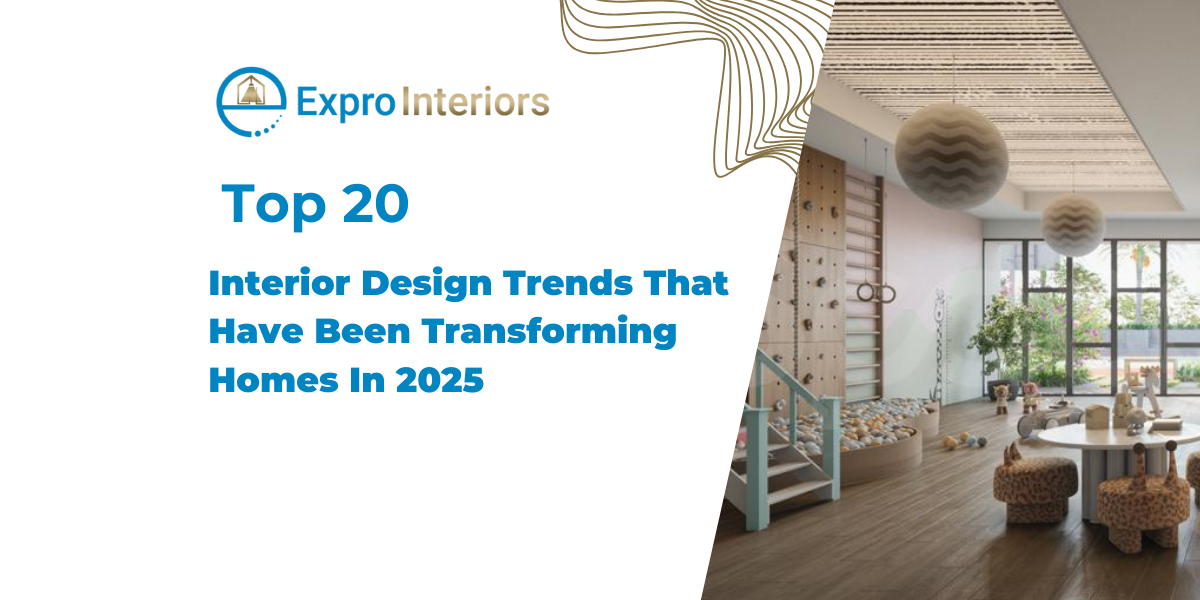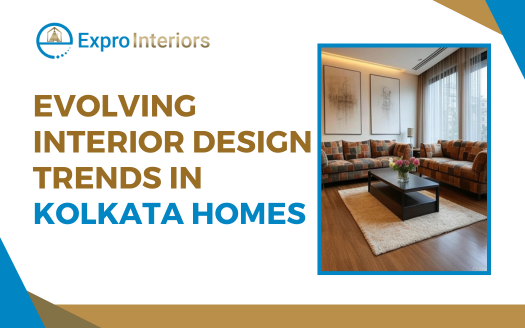Creating a beautiful home no longer means compromising on the environment. Today, both homeowners and renters are discovering that sustainable choices can be just as stylish, functional, and even more meaningful.
From eco-friendly materials to energy-saving solutions, modern interior design is blending aesthetics with responsibility.
This shift did not happen overnight. What once felt like a niche trend is now a global movement. It is driven by growing awareness, better choices in the market, and a deeper need to live in harmony with nature.
Whether you’re designing a new space or updating an old one, making conscious choices in your interiors can make your home healthier, more efficient, and longer-lasting.
Table of Contents
ToggleA Glimpse Of the Journey: Sustainable Interior Design
Here’s how sustainable interior design evolved over the years, supported by real data and examples.
Early Beginnings: Sustainability Starts Outside
Sustainable interior design has its roots in the broader green building movement, which gained momentum in the 1970s during the global energy crisis.
At that time, the focus was on constructing homes and buildings that required less energy and made better use of natural resources. Solar panels, energy-efficient insulation, and passive design strategies became central to the conversation.
However, the interiors of those homes were still filled with synthetic materials, chemical-heavy paints, and plastic furnishings. The contradiction was obvious: while exteriors were efficient, interiors remained toxic and resource-intensive.
Interiors Join the Conversation
By the 1990s, researchers and designers began to draw attention to the health and environmental risks inside the home. Wall paints, vinyl flooring, foam cushions, and chemically treated carpets emitted Volatile Organic Compounds (VOCs) that affected indoor air quality.
Meanwhile, mass-produced furniture made from non-renewable materials contributed to landfill waste and deforestation.
Designers began to explore alternatives: organic textiles, non-toxic finishes, and local, artisanal pieces that had a smaller carbon footprint.
Slowly but steadily, the concept of sustainable interior design took form, both as a design choice, and as a lifestyle approach!
Present Day: Health, Ethics, and Aesthetics Intersect
Today, sustainable interior design balances multiple goals: protecting the planet, creating healthier living environments, and supporting ethical manufacturing practices. The following three pillars define the movement:
- Materials
Reclaimed wood, bamboo, cork, and natural fibers have become staples. These materials are biodegradable, renewable, and often require less processing.
- Well-being
Designs now prioritize air quality, daylight access, and reduced exposure to toxins, making homes safer and more comforting.
- Circular thinking
Designers consider the afterlife of a product, how easily it can be reused, repaired, or recycled. Educational institutions and design schools now offer sustainability-focused curricula, equipping the next generation of designers to think in terms of systems and impact.
Ready to Crunch Some Numbers?
Here are some staggering statistics you’d love to explore!
- The global green building materials market was valued at approximately $516 billion in 2023 and is projected to reach $1.37 trillion by 2034, growing at a CAGR of 9.4%.
- The sustainable home goods market reached $400 billion in 2024 and is expected to grow to $800 billion by 2032, with a CAGR of around 10%.
- The global eco-friendly furniture market was valued at $43.26 billion in 2022, and is expected to grow at a CAGR of 8.6% through 2030.
- The green single-family housing segment is expected to grow from $179 billion in 2025 to $315 billion by 2029, at a CAGR of 15%.
- Design schools like NYSID are now integrating circular design and sustainable practices into their programs, encouraging students to focus on low-waste, low-toxicity interiors.
- Green Building & Design Magazine highlights how the industry has shifted from ‘greenwashing’ to measurable, health-focused interior design.
10+ Sustainable Interior Design Trends
Here’s how the eco-conscious homeowners and designers are creating a beautiful interplay of interior design and their love for nature!
1. Upcycled and Reclaimed Furniture
Want to make your home beautiful and eco-conscious at the same time? Upcycling is a great place to start. It means taking old furniture or materials and turning them into something useful and stylish, often with just a bit of creativity.
You could think of it as giving a second life to things like worn-out chairs, discarded wood, or unused fabric instead of throwing them away.
Reclaimed furniture works in a similar way. It is usually made from materials saved from old buildings or structures that would have otherwise gone to waste. Whether it is a wooden beam from an old house or an iron grille from a gate, these materials are full of character and history.
The best part is that both options are kind to the planet. If you’re redesigning your home, ask your local carpenter to help you restore a solid teak cabinet or give an old coffee table a new finish.
You can also explore vintage shops or antique bazaars for reclaimed wood furniture like bookshelves or dining tables that add charm and personality to your space.
2. Natural and Organic Materials
This trend focuses on using materials that come from nature, cotton, wool, jute, rattan, bamboo, and similar options that are biodegradable and free from harmful chemicals. These materials are used in upholstery, rugs, curtains, and bedding to create soft, breathable spaces.
Natural materials support a healthier indoor environment. Unlike synthetic fabrics, which may emit harmful substances over time, organic options are hypoallergenic and gentler on the skin. They also tend to age better and require less chemical treatment during manufacturing.
When shopping for your home, look for certified organic cotton bed sheets, handwoven bamboo blinds, or natural wool throws. They not only feel good to touch but also help reduce the toxic load in your personal space.
3. Low-VOC Paints and Finishes
When you paint your home, the last thing you want is to fill the air with harmful chemicals. VOCs, or volatile organic compounds, are found in many regular paints, adhesives, and finishes.
Once released into the air, they can cause headaches, breathing problems, and even long-term health issues.
Low-VOC and zero-VOC paints are a much safer choice. They have very little chemical smell, dry faster, and are safer for children, pets, and anyone with allergies. These paints are a smart option for small apartments or homes that do not have much ventilation.
Before buying paint, look for trusted eco-labels like Green Seal or BIS-certified products.
Many popular brands now offer eco-friendly paint collections that are just as durable and vibrant as traditional paints but without the health risks. It is a simple switch that makes your home healthier for everyone.
4. Indoor Plants for Natural Air Purification
Indoor plants like spider plants, areca palms, snake plants, and pothos naturally filter out toxins like formaldehyde and carbon monoxide from the air. In addition to purifying your space, they also add a sense of calm and greenery indoors.
They’re especially beneficial in cities like Kolkata, where pollution levels can vary with seasons.
Small apartments in areas like Gariahat or Lake Gardens often use balcony plants to buffer outdoor dust and improve indoor air quality. Many local nurseries offer low-maintenance indoor species suited for the region’s humidity.
You can place small planters near windows, hang baskets in corners, or keep a tall indoor palm near the entrance. Caring for plants adds a meditative rhythm to your day and subtly improves your home environment.
5. Vintage and Second-Hand Decor
Vintage decor refers to older design pieces that carry charm and character from past decades.
It could be a brass mirror from the 70s, an art deco lamp, or a mid-century style chair. Second-hand decor includes pre-owned items that still function well and fit your aesthetic.
Buying vintage reduces the demand for new resources. Every reused item means one less product that needs to be made from scratch. It’s also a form of quiet rebellion against fast furniture trends, which often rely on low-quality, disposable materials.
You can explore curated vintage shops, online resale platforms, or flea markets to find beautiful second-hand pieces. Even mixing just one or two vintage elements with modern decor can give your space a distinct personality.
6. Energy Efficient Lighting
Switching to energy-efficient lighting is one of the easiest ways to cut electricity costs without compromising on brightness or style.
Using LED bulbs, motion sensor lights, dimmers, and solar-powered options can make your home more sustainable and modern at the same time.
Traditional incandescent bulbs use a lot of energy and give off unnecessary heat. In comparison, LEDs use up to 80 percent less power and last much longer, making them a smart investment for any room.
You can start by replacing old bulbs with warm-toned LED lights. Instead of lighting up the whole room, try task lighting like a desk lamp or under-cabinet lights for better focus and lower energy use. This approach not only saves power but also adds a cozy feel to your space.
If you’re in Kolkata, you will find smart lighting brands in local electronics markets like Chandni Chowk and Gariahat. These stores often have a wide variety of energy-saving options, including dimmable lights and motion sensors.
For extra impact, pair your lighting with light-colored walls and strategically placed mirrors. This helps reflect natural sunlight during the day, reducing the need for artificial lighting and giving your home a bright, airy feel.
7. Sustainably Sourced Wood
This trend is about choosing wood that comes from responsibly managed forests, often certified by FSC or using reclaimed timber from old buildings or discarded furniture.
Unsustainable logging contributes to deforestation and habitat destruction. By selecting wood that’s sustainably sourced, you support forest regeneration, protect biodiversity, and reduce carbon emissions linked to transportation and illegal harvesting.
Consider mango wood or acacia furniture, which are widely available and more sustainable than teak. You can also shop at local Kolkata stores that sell recycled or reprocessed wood items. Avoid items that don’t disclose their origin because transparency is key in sustainability.
8. Bamboo and Cork Flooring
Bamboo and cork are smart, eco-friendly alternatives to traditional wooden flooring. Both come from fast-growing, renewable sources.
Bamboo has the sleek look of hardwood but grows much faster, while cork is gently harvested from the bark of trees without cutting them down, so the tree keeps growing.
These materials are not just sustainable, they’re practical too. Cork feels soft and springy underfoot, making it a great option for comfort. Both bamboo and cork also help regulate temperature, which is a big plus during Kolkata’s humid monsoon months.
In fact, more homes in South Kolkata are now using cork flooring in children’s rooms and study areas because it cushions falls and feels warm to walk on. Bamboo tiles, with their clean and modern finish, are becoming popular in living rooms and bedrooms.
You’ll find bamboo and cork tiles at eco showrooms across major metro cities. Installation is easy, but make sure to ask for adhesives and finishes that are free from formaldehyde.
This keeps your flooring not only stylish and durable but also completely safe for your family and the environment.
9. Recycled Glass and Metal Accents
Recycled materials are a great way to add character to your home while reducing waste.
Crushed glass countertops, aluminum light fixtures, and iron wall hangings not only keep discarded materials out of landfills but also bring in beautiful textures that work well in both modern and rustic interiors.
Using recycled materials also saves a huge amount of energy.
For example, making recycled aluminum takes about 95 percent less energy than producing it from raw ore. Glass, too, can be melted and reused over and over without losing its quality or shine.
To bring this idea into your home, look for handmade metal decor from Indian artisans or try using recycled glass tiles for your kitchen backsplash. Such small choices go a long way in supporting sustainable living while giving your space a stylish, thoughtful look.
10. Eco Friendly Textiles
Eco-friendly fabrics like organic cotton, hemp, khadi, and linen are made without harmful pesticides or chemical dyes. These natural materials are perfect for everyday home essentials such as curtains, cushion covers, rugs, and bedding.
Traditional textile production is one of the most polluting industries in the world. In contrast, sustainable fabrics are gentler on your skin, break down more easily in the environment, and require much less water to produce. Choosing them is not only better for your home, but also for the planet.
You can start small by switching to handloom khadi bed covers or organic cotton drapes. In Kolkata, places like Dakshinapan shopping complex or seasonal handloom expos often have beautiful, locally made sustainable textiles.
Is Eco Friendly Interior Design Costly or Affordable? The Answer is: Both
Sustainable interior design is becoming more popular across Indian homes, from metro cities to small towns.
Whether you live in a flat in Kolkata or a villa in Bangalore, creating an eco conscious space is more possible than ever. But many people still wonder if going green will burn a hole in their pocket. The truth is, eco-friendly interior design can be both costly and affordable. It all depends on your approach, choices, and priorities.
Let’s explore both sides.
When Eco Friendly Interiors Feel Costly
- Higher Cost of Sustainable Materials
Some materials used in sustainable interior design come with a higher upfront price. For example, organic fabrics, responsibly sourced wood, low VOC paints, and handmade tiles often cost more than their conventional counterparts.
That’s because they’re produced ethically, in smaller batches, and often use better quality inputs. This leads to increased durability but higher initial spending.
- Skilled Labour and Custom Installations
Certain eco friendly installations require specialised labour or expertise. A local carpenter may charge extra to work with reclaimed timber. Similarly, installing bamboo or cork flooring, or integrating solar panels and water saving systems, could involve added labour costs.
If you’re going for green certifications or smart technology, that adds to the total budget too.
When Sustainable Interior Design is Surprisingly Affordable
- Budget Friendly, Local Alternatives
Sustainable interior design doesn’t always mean expensive imports. In fact, many Indian brands and artisans offer locally made, eco friendly products at reasonable prices.
For instance, you can find beautiful jute rugs, handwoven cotton bedsheets, or recycled metal decor from Indian markets and craftspeople. Upcycling old furniture or buying second hand pieces is also a great way to save money.
- Long Term Savings on Utilities and Maintenance
Going green can reduce your monthly costs. Energy efficient LED lighting, solar water heaters, and water saving taps can significantly lower your electricity and water bills over time.
High quality materials like natural stone or reclaimed wood tend to last longer, reducing the need for repairs or replacements. In this way, sustainable choices often pay off in the long run.
What It Means for Indian Homes
In India, the cost of eco-friendly interior design comes down to how you plan and source. If you rely on mass manufactured eco labels or imported materials, the budget can rise.
But if you choose thoughtfully from local markets, traditional crafts, or simple upcycled options, you can build a green home that is both beautiful and economical. Even small changes, like switching to clay planters or organic curtains, make a difference.
Sustainable interior design is not about luxury alone. It’s about balance, responsibility, and smart design. Whether your budget is small or spacious, you can always start somewhere.
How Expro Interiors Can Help You Build a Greener and Smarter Home
Expro Interiors makes it easy for you to create a beautiful home that is also eco friendly.
Whether you want a full home makeover using sustainable materials or just small changes like natural fabrics, smart lighting, or recycled furniture, our team is here to guide you. We focus on designs that are stylish, practical, and better for the environment.
We work with trusted local suppliers and experienced craftsmen who know how to use safe and long lasting materials. From low chemical paints to energy saving layouts and nature inspired colours, we help you choose the right options based on your space and budget.
With us, you get a home that is healthier, more comfortable, and designed with care for the planet.
Let us help you bring your vision of a greener home to life.





